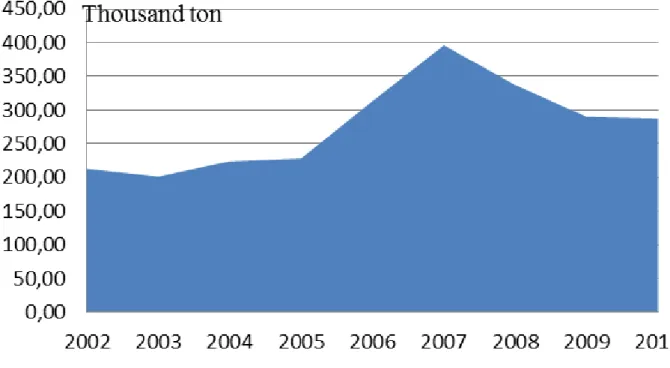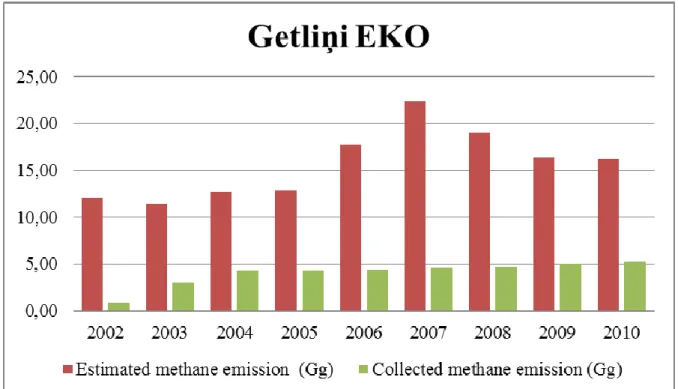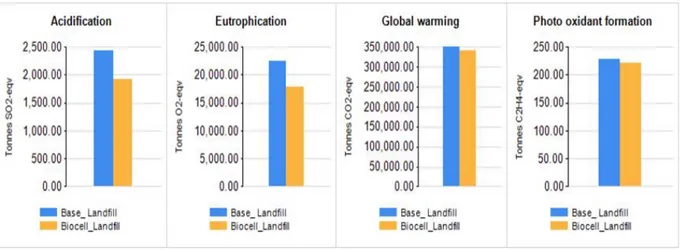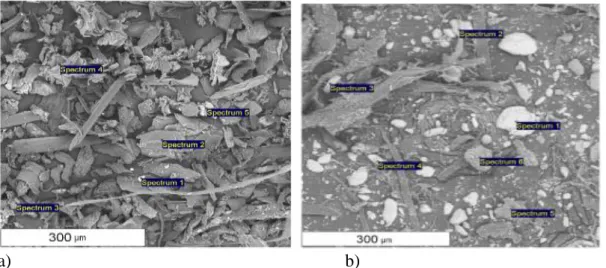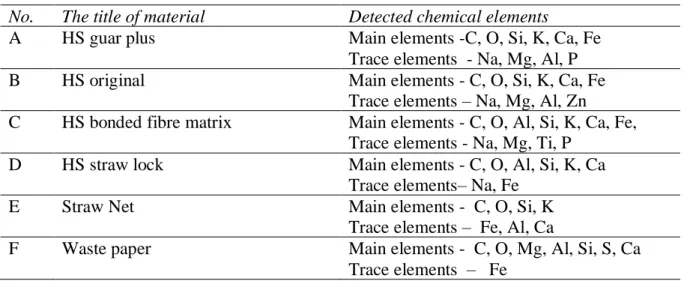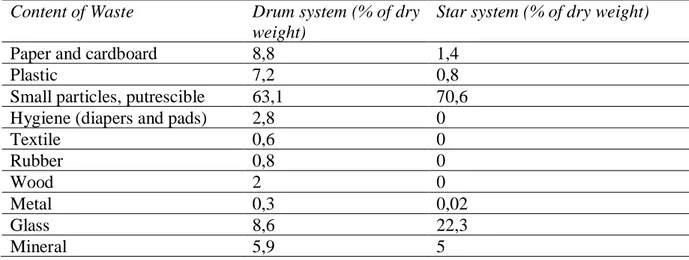DOI: https://doi.org/10.15626/Eco-Tech.2012.015
BIOREACTOR CELLS AS WASTE
PRE-TREATMENT METHOD – STARTING
STATEMENTS, MAINTENANCE, FINAL
RECOVERY AND LANDFILLING
Ruta Bendere
Waste Management Association of Latvia
Ruslans Smigins
Institute of Physical Energetics, Latvia
Dace Arina
Latvia University of Agriculture
Inara Teibe
University of Latvia
ABSTRACT
Bioreactor landfilling, with the acceptance of landfill Directive in EC in 1999, loosed its actuality in EC, but this method can still be used for acceleration of bio-waste degradation and biogas production as pre-treatment technology of waste. As large gas collection facilities are built and millions of EUR are invested for biogas treatment and production of electricity and heat in the new constructed sanitary landfills in Baltic States, the idea of usage of biogas production cells as bio-waste pre-treatment method is revised.
KEYWORDS
Bio-cell, landfill, waste
INTRODUCTION
According to the EC requirements and Regulations of the Latvian Cabinet of Ministers No. 1032 from the year 2011 the sanitary landfill can dispose only pre-treated waste with content of bio organics less than 50% (from the year 2010) or 35% from 2020. The biomechanical technologies for the bio-waste pre-treatment is widely used in Germany and other European countries, but it is not the best solution for the Baltic states as realized projects for waste disposal sites are constructed with gas collection and electricity production and heat utilization facilities.
One of the possible solutions is revised as the pilot project in the project RECO TECH 21 BALTIC for the biggest landfill site of Riga city – “Getlini”. Its territory covers about 87 ha. About 300 000 – 400 000 tons of municipal solid waste is disposed per year. As the sanitary
landfills with the anaerobic process for waste treatment is one of the greatest producers of GHG (greenhouse gases) [4], the goal of this project is to implement technologies limiting the emission of GHG.
Starting with the next year solid municipal waste will be separated and mainly bio-waste will be disposed in “bioreactor energy cell” where landfill gas production will be accelerated using appropriate conditions for the anaerobic processes. The idea of constructing and usage of the separate closed bio-cells for providing the treatment of waste is not new, but practical realization of such bio-cells are revealing a lot of problems, especially, selection of appropriate daily covering material. The daily waste covering helps not only to break down the waste, but also to minimize odours, reduce fire hazard potential and minimize blowing litter. Leachate production is minimized if waste is covered with impermeable cover. The traditional material used for this activity is soil but lifetime of the landfill depends on the remaining permitted available space. In this content each cubic meter of daily covering material takes landfill volume and reduces lifetime. At the same time daily cover has an impact on landfill gas production and collection. Therefore the main goal of this pilot project is to find the daily cover material which maximizes the amount of collected landfill gas and saves landfill space.
CHARACTERIZATION OF WASTE DISPOSAL IN GETLINI
There are disposed more than 3 million tons of municipal waste (see Figure 1) during the last ten years in landfill “Getlini”.
Figure 1. Quantity of disposed waste in the sanitary landfill “Getlini” during the years 2002- 2010
The content of waste was detected by field experiments in the year 2010 [1] and represented by Figure 2.
0 10 20 30 40 50 60
Paper Plastic Food, hygiene, garden, fine Wood Textiles, leather, rubber Mineral, ceramic Glass Metal
Figure 2. The average composition of municipal solid waste within inspected landfill “Getlini” in Pieriga region (% of dry weight)
Provided calculations of produced landfill gas (LFG) quantity according to the content of organic compounds of carbon [2] and the results of the measurements of collected gas during the last years are given in the Figure 3. It shows that in average less than 30% of the theoretically produced landfill gas is collected.
REDUCTION OF ENVIRONMENTAL IMPACT
The disposed quantities of bioorganic waste and emission of landfill gas is providing GHG (greenhouse gas) emissions which are increasing with each year. To reduce the emitted quantities, the landfill operator is elaborating the new waste management project based on the pre-treatment activities of income waste. The solution is based on the usage of bio-cell landfill which has less negative influence on environment as dry landfills. The estimated negative impact on the environment rose by dry landfill and bio-cell landfill (calculated by modelling software WAMPS, RECO TECH 21 BALTIC according the data of disposed waste in “Getlini”) is presented in Figure 4.
Figure 4. The estimated negative impact on the environment roused by dry landfill and bio-cell landfill
There are rapidly decomposing materials in the composition of landfill refuse material, such as kitchen waste, paper and cardboard, garden and green waste and slowly decomposing materials, as natural textile, leather and wood. All those materials create methane emission for the long period of time. Bioorganic waste will be decomposed in the biocell that is isolated system and consists of (see Figure 5) leachate – moisture addition system, gas recovery system, bottom liner system and leachate collection system. The biocell is designed and operated to reduce short term risks connected with leachate and LFG production (mainly CH4
and CO2). In bioreactor landfill gas generation rates are much more higher than in
conventional landfill. A bioreactor landfill is a sanitary landfill that uses microbiological processes decomposition in a short period of time (5 to 10 years) that is the primary advantage of operating bioreactor landfill. Cost saving are possible because of specific type of a bioreactor where moisture that is added to the waste mass is recirculated leachate to obtain optimal moisture level. Due to an increase in density of waste mass, there is possible 15 to 30% landfill space saving. It is expected that LFG generation rate from landfill bioreactor will be higher than from a tradittional landfill. After waste stabilization the landfill can be mined.
Figure 5. Schematic of a bioreactor landfill using leachate recirculation [5]
THE INVESTIGATIONS OF DAILY COVERING MATERIAL
The use of daily covering materials in bioreactor landfill requires special attention. A cover more permeable than waste can direct leachate to the sides, where the leachate must be properly collected and drained. Low permeability daily cover can create barriers to the effective percolation of leachate and water [3]. At the same time the daily covering materials must avoid the landfill gas and odours propagation and has not contained the hazardous components reduced the activities of bacteria’s. To investigate the properties of different covering materials there were provided the laboratory tests in the Faculty of Applied Chemistry, Riga Technical University. There was used X ray spectrometer (SEM EDS) for the test analyses. The microscopic photographs of examples are presented by Figure 6.
a) b)
Figure 6. Daily covering materials consisting from HS bonded fibre matrix (a) and waste paper (b).
The chemical content of materials is represented by Table 1. All the materials contain large concentration of C and O, reflecting that the main content of straw materials consists of polycyclic compounds but the paper waste - lignite. The analyses of waste paper shows that material contains large concentration of sulphur and can not be advised as daily covering because it can inhibit the processes of anaerobic digestion.
Table1. The chemical content of covering materials
No. The title of material Detected chemical elements
A HS guar plus Main elements -C, O, Si, K, Ca, Fe
Trace elements - Na, Mg, Al, P
B HS original Main elements - C, O, Si, K, Ca, Fe
Trace elements – Na, Mg, Al, Zn
C HS bonded fibre matrix Main elements - C, O, Al, Si, K, Ca, Fe, Trace elements - Na, Mg, Ti, P
D HS straw lock Main elements - C, O, Al, Si, K, Ca
Trace elements– Na, Fe
E Straw Net Main elements - C, O, Si, K
Trace elements – Fe, Al, Ca
F Waste paper Main elements - C, O, Mg, Al, Si, S, Ca
Trace elements – Fe
ADDITIONAL WASTE PRE-TREATMENT ACTIVITES
To improve disposed waste content it is planned to reduce the content of organic materials using the separation of waste as the pre-treatment method. The results of waste sorting lines installed in landfills “Daibe” (star system screening) and “Vibsteri” Waste recycling centre (drum system screening) shows that it is possible to sort out more than 50% of waste with high energy capacity (see Table 2).
Fractions of waste Star system screening Drum system screening
Coarse Fraction 18-25% 50-55,5 %
Medium Fraction 38-43%
Fine Fraction 30-36 % (< 25 mm) 43-47 % (< 60 mm)
Metal 2-3 % 1,5-3 %
Table 2. The fractions of waste after mechanical pre-treatment (drum system screening and star system screening)
The sorted material can be used for preparation of RDF (refuse derived fuel) or can be incinerated for energy production. The particles with small size (fine fraction) are mainly biomass, glass and stones. The average content of fine fraction is given in Table 3. As the level of contaminants is high (~22% and 28%), it can not be used as compost material. Such fractions can be used for additional treatment in the bio-cell. Provided calculation of landfill gas gain shows that anaerobic digestion of the sorted household wastes must be supplemented by bio-waste from industrial or municipal branches.
Content of Waste Drum system (% of dry weight)
Star system (% of dry weight)
Paper and cardboard 8,8 1,4
Plastic 7,2 0,8
Small particles, putrescible 63,1 70,6
Hygiene (diapers and pads) 2,8 0
Textile 0,6 0 Rubber 0,8 0 Wood 2 0 Metal 0,3 0,02 Glass 8,6 22,3 Mineral 5,9 5
Table 3. Average value of fine fraction (% of dry mass) after mechanical pre-treatment sorting (drum system screening and star system screening) in summer season
A previous researches show that such bio-activated degradation prolongs 5-7 years [3]. The final stage of such cells includes sorting of material, recovering and landfilling of non-usable part. This procedure is equal to the landfill mining stage. After bio treatment and stabilization treated waste can be used as landfill covering material.
ACKNOWLEDGEMENTS
The work has been supported by National Energy Research Programme “Latenergi”.
REFERENCES
[1] Arina, D., Kalnacs, J., Murashow, A., Grigale, D, 2012. Greenhouse Gases Emissions by Energy Production and Waste Disposal. In: Renewable Energy & Power Quality Journal (RE&PQJ), No. 10, p. 414, http://www.icrepq.com/RE&PQJ-10-0.html
[2] Arina, D., Bendere, R., Teibe, I, 2012. Pre-treatment processes of waste reducing the disposed amount of organic waste and greenhouse gas emission. In: Proceedings in the ISWA World Solid Waste Congress 2012, September 17-19, Florence, Italy, p. 517.
[3] Pacey, J., Morck, R., Reinhart, D., Yasdani, R. The Bioreactor Landfill – an Innovation in Solid Waste Management, p. 1-10.
[4] IPCC Guidelines for National Greenhouse Gas Inventories, 2006. [5] Hughes, K.L., Christy, A.D., Heimlich, J.E. Bioreactor Landfills.
http://ohioline.osu.edu/cd-fact/pdf/0139.pdf
[6] ITRC (Interstate Technology & Regulatory Council), 2005. Characterization, Design, Construction, and Monitoring of Bioreactor Landfills. ALT-3. Washington, D.C.: Interstate Technology & Regulatory Council, Alternative Landfill Technologies Team.
